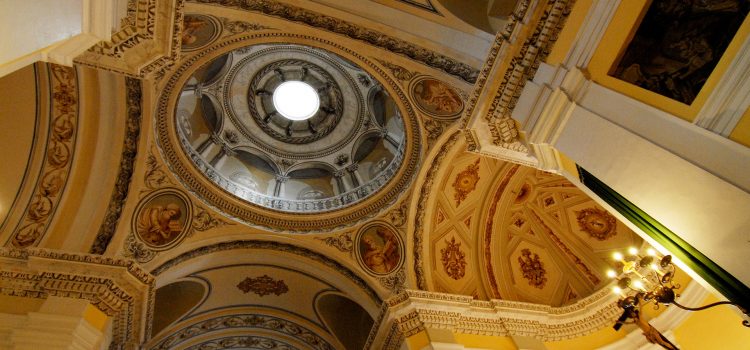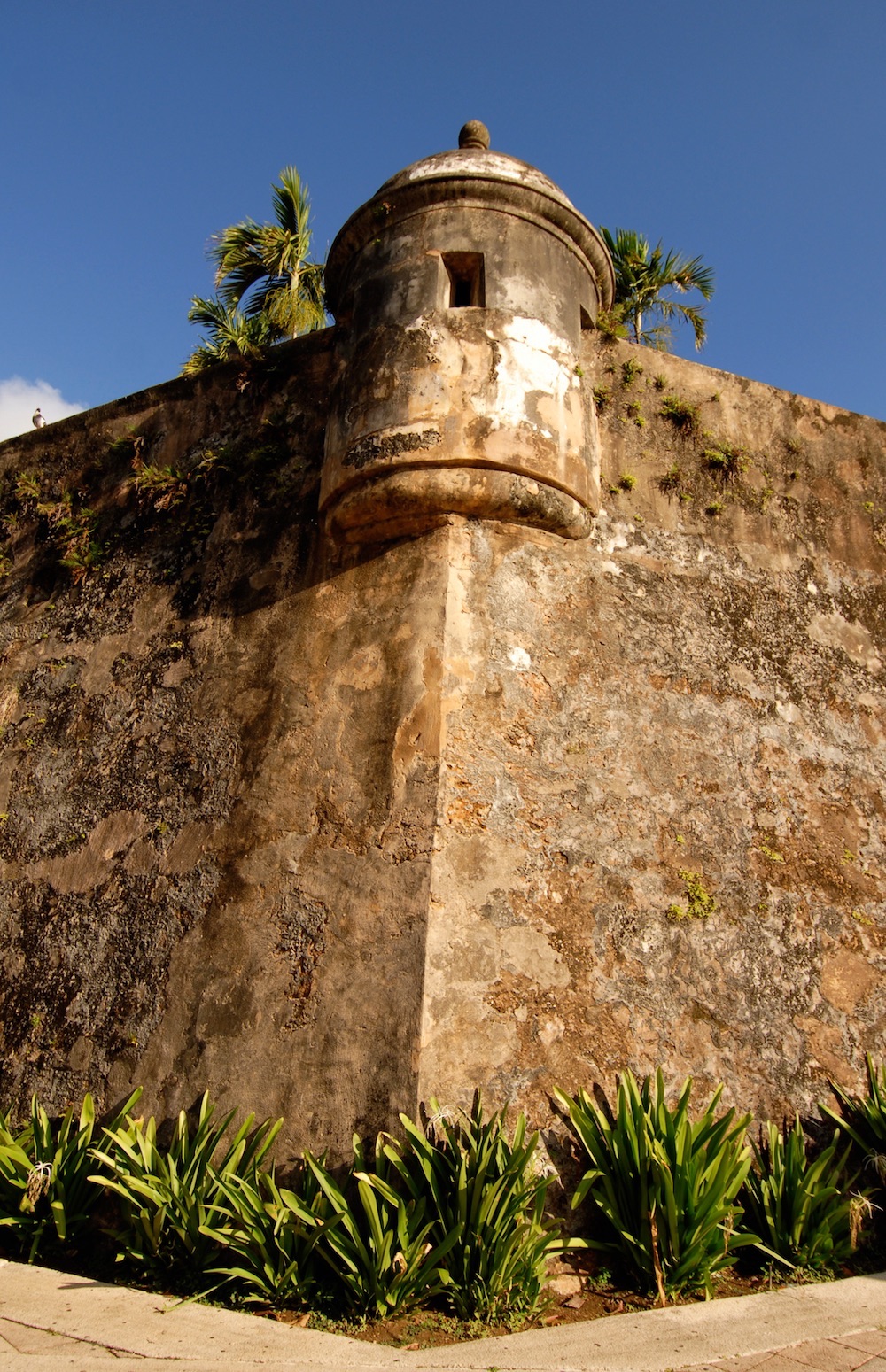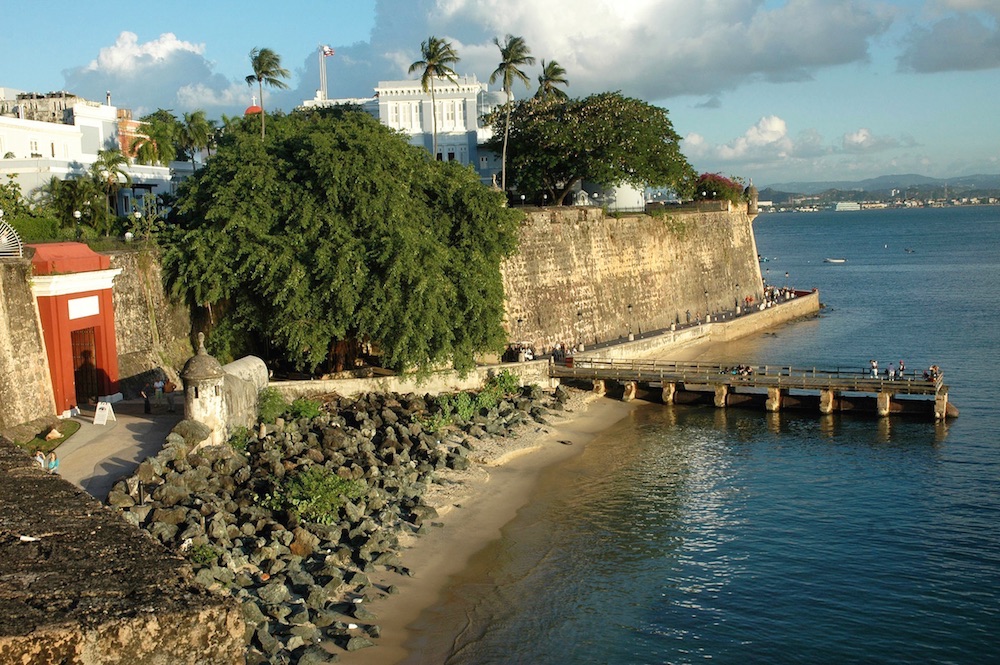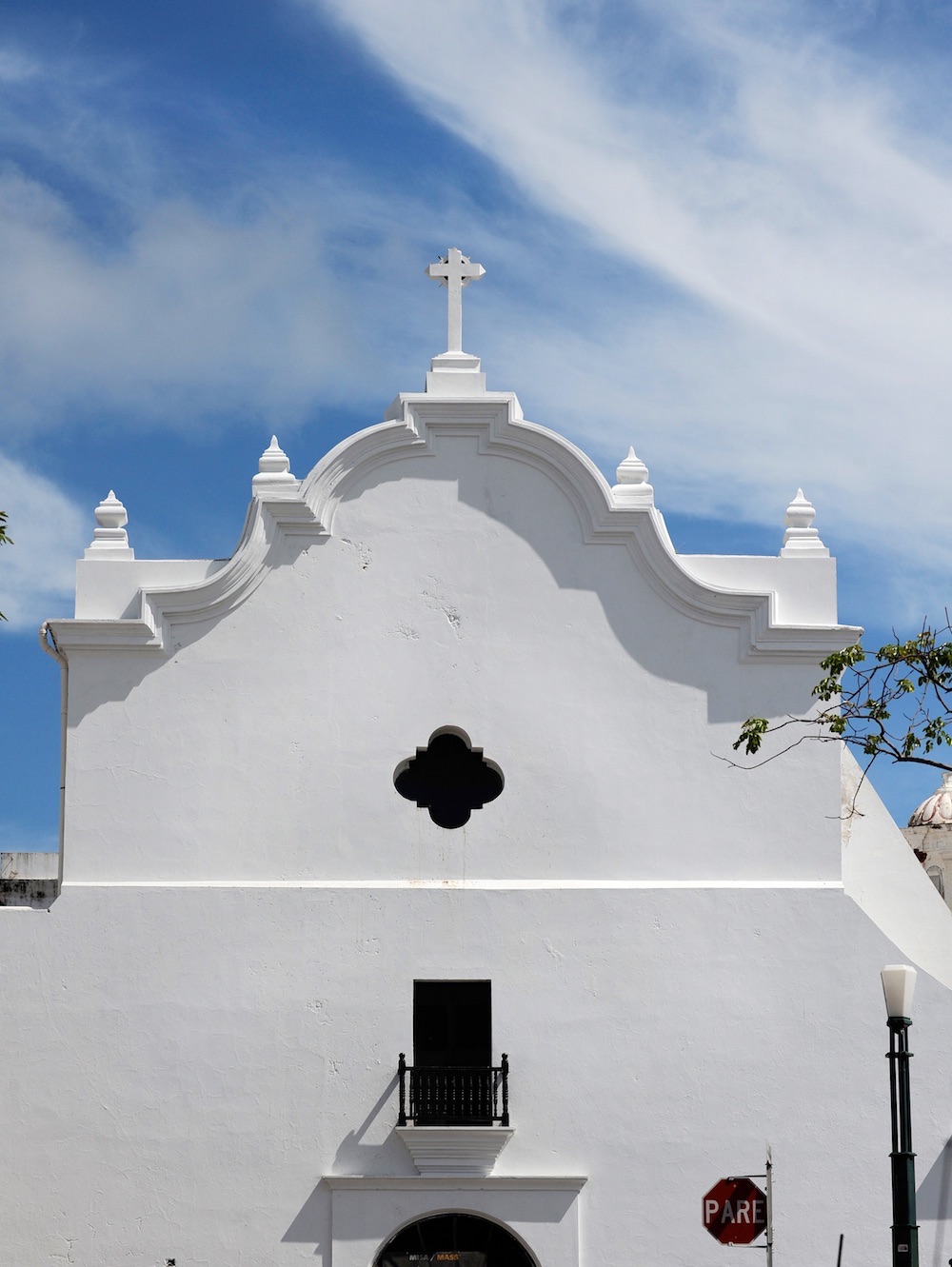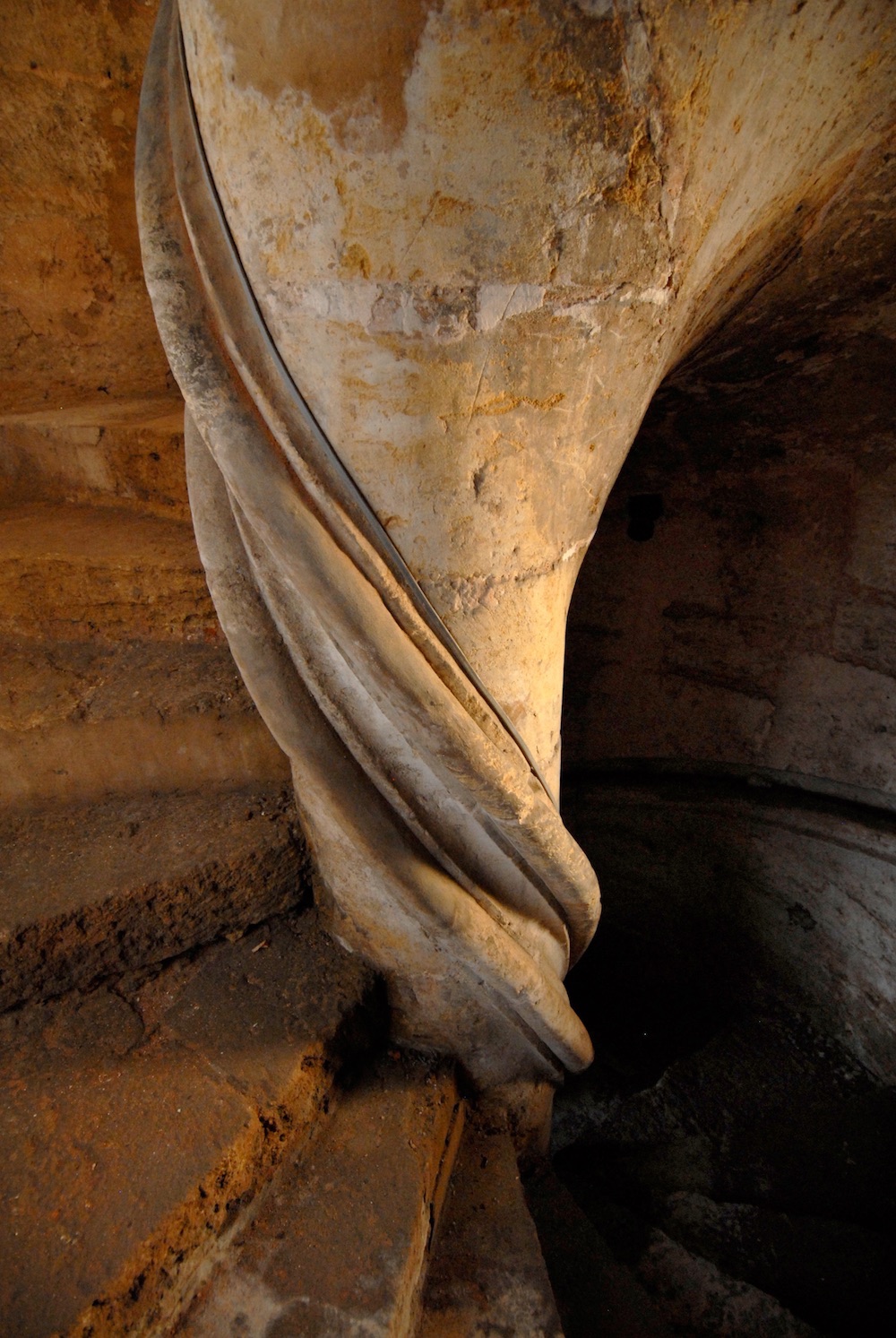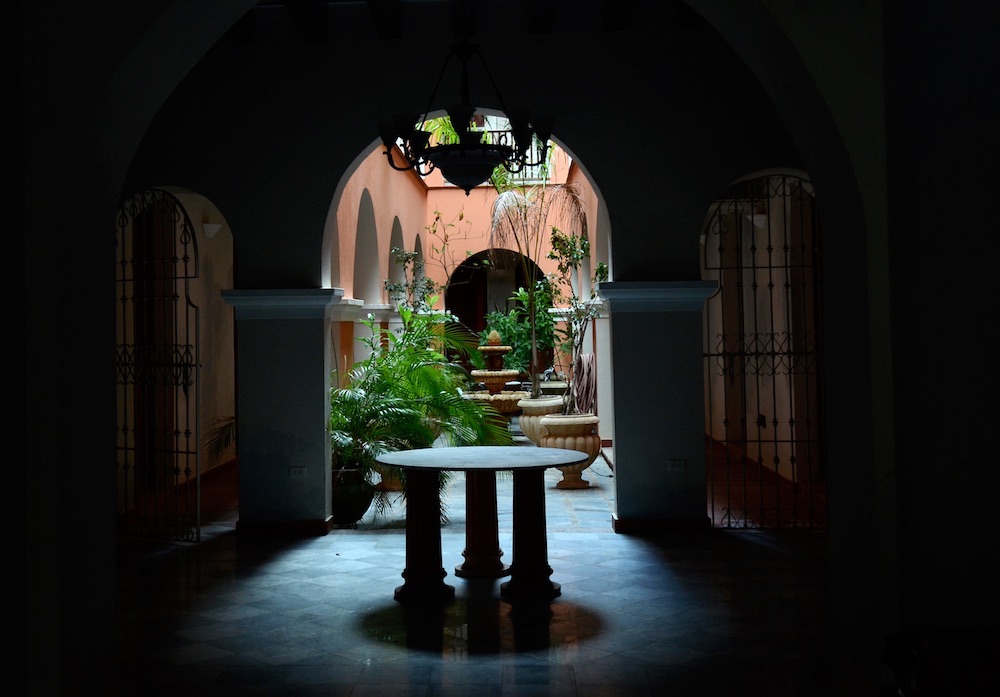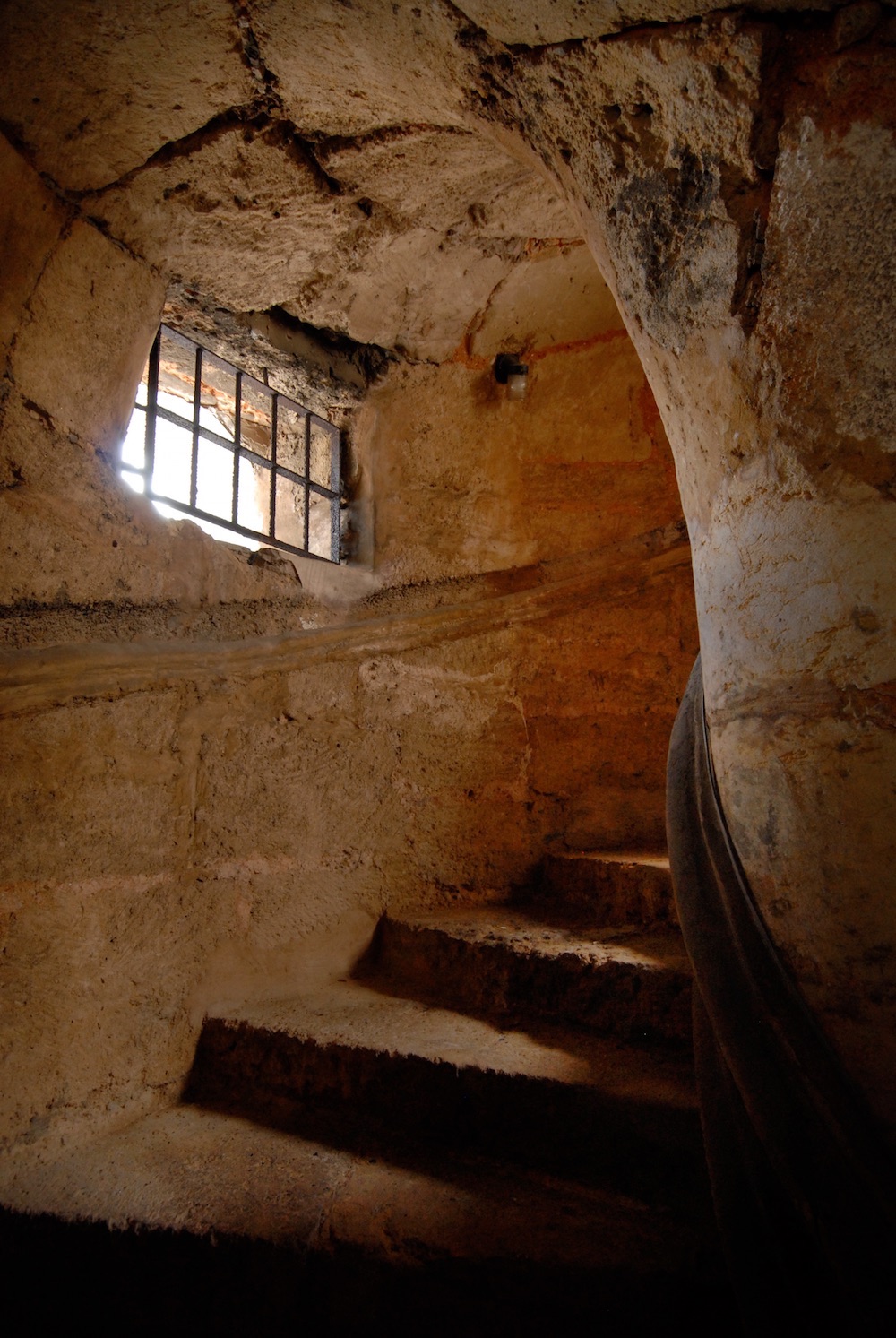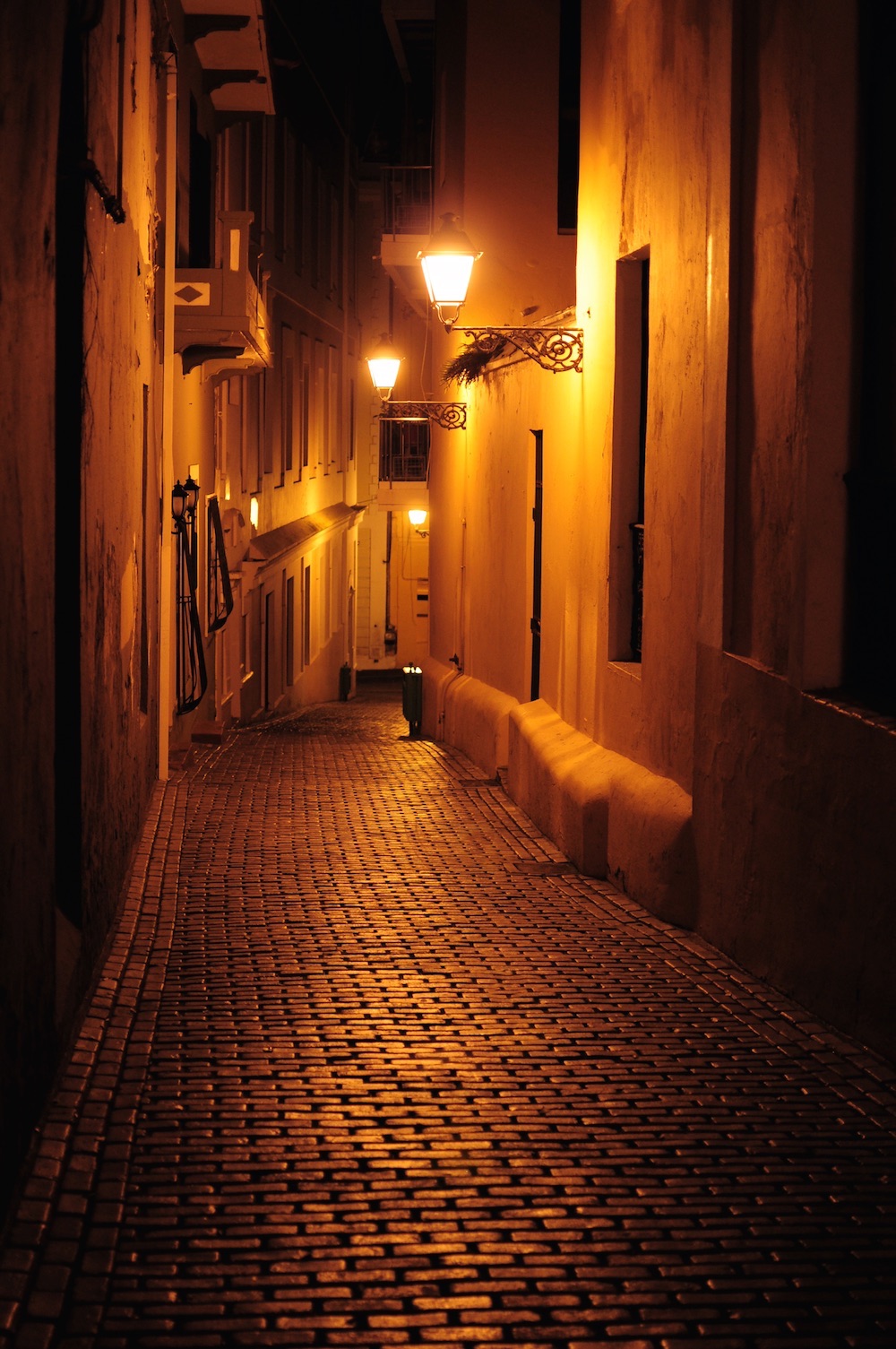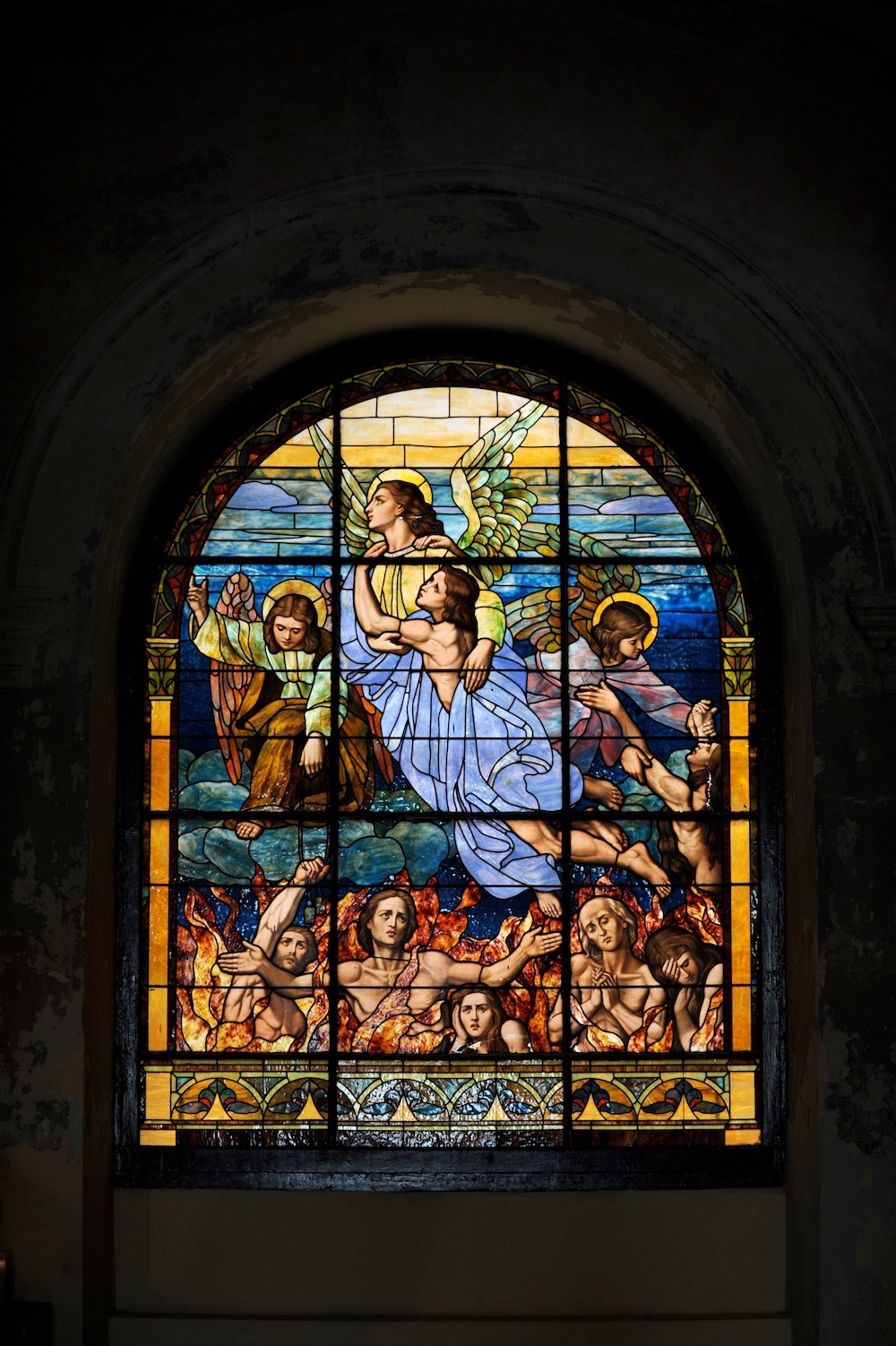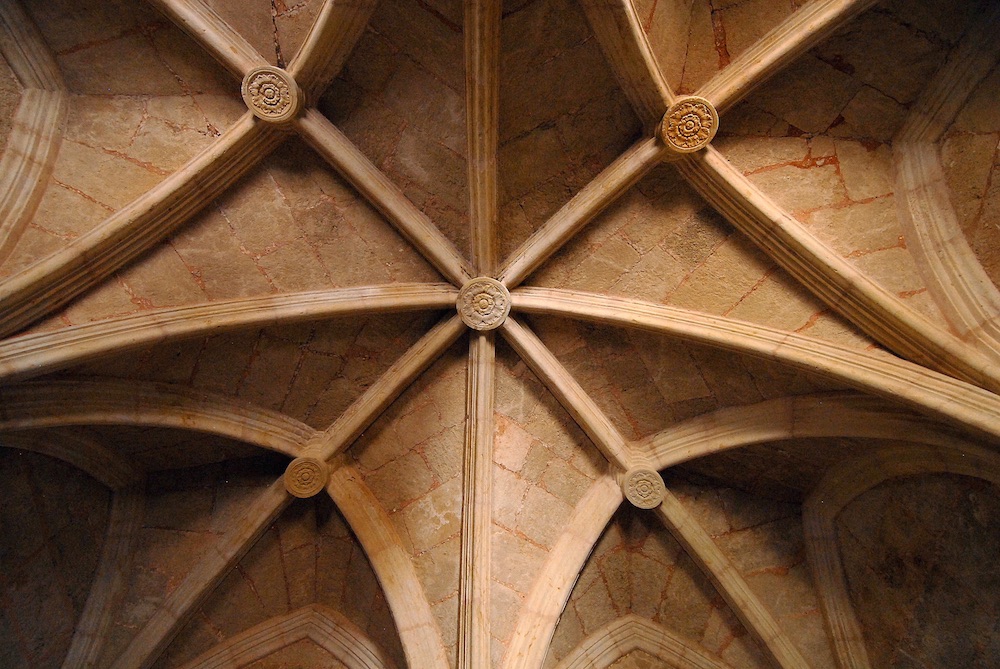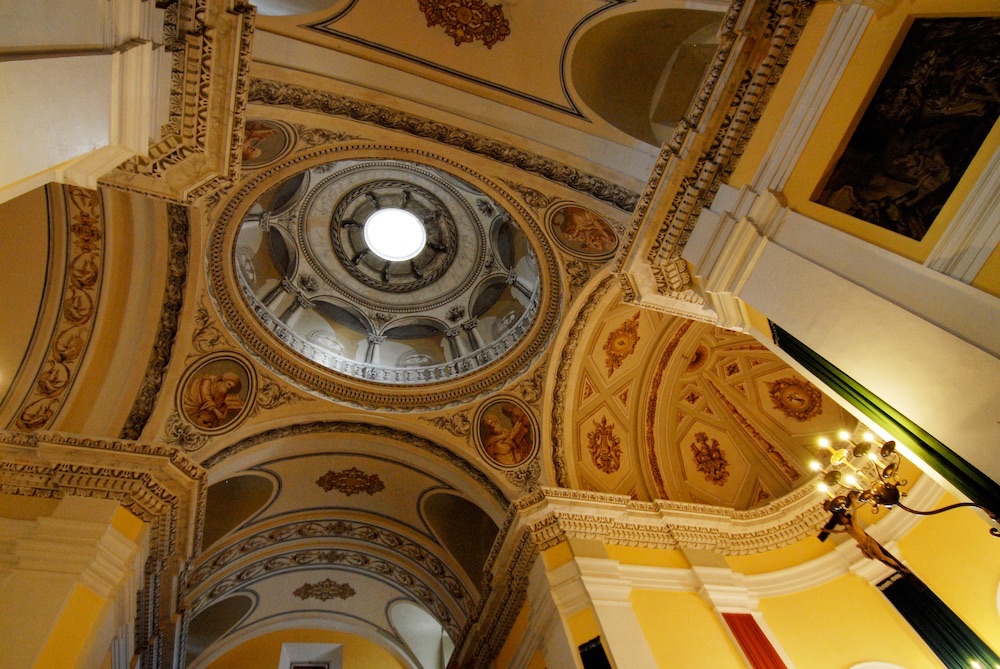The ancient city tells its own hidden history
The city of San Juan was founded in 1520 after Juan Ponce de Leon decided to relocate from the town of Caparra.
Extreme heat and humidity as well as rebellious Taino Indians made them resettle on the edge of a 2.5 mile size isle overlooking the bay where they had already established a port.
The first dwellers were mostly gold diggers and a number of clergymen. This first settlement to San Juan occurred 100 years before the Mayflower pilgrims arrived at Plymouth.
San Juan developed into a full blown city by the late 18th century and its growth was limited because it was confined within walls built to protect it from invaders
During the 19th century, San Juan was overcrowded and a busy center of commerce, government, military, and cultural life. After the settlement of Americans and the tearing down of inland walls, wealthy and upper middle class families started moving to areas like Condado and Miramar, and the Old City became an impoverished working class town.
A restoration project in the 1970’s and a growing conscience of the city’s charm started attracting middle-class and affluent families. The one constant trait of today’s sanjuaneros is that they are proud of their town and prefer to live in a cultural and historic ambiance rather than in the midst of suburban life full of asphalt and shopping malls.
The walking tour
Bienvenidos participated in a walking tour called San Juan Oculto (Hidden San Juan), a project designed to reveal the architectural wonders and details of the Old City. It was initiated by a group of volunteers, graduate students and teachers from the University of Puerto Rico’s School of Architecture, who teamed up with the San Martin de Porres Foundation. The idea was to develop an educational walking tour as a source of funding- the cost of the tour is what the guest wishes to donate towards the foundation’s work in needy areas of Haiti and the Dominican Republic.
“We want to include tourists, visitors, and student groups who want to learn about the richness, and history present when you walk through Old San Juan,” said Prof. Jorge Lizardi-Pollock, who leads the project along with Pedro Van Marissing of the Foundation.
San Juan Oculto offers three different routes. The first called One City, Many Pasts demonstrates the different historical layers preserved in architectural styles. The second called Architecture, Order and Authority in the Old City explores the structures related to the institutions of power in Spanish colonial times and the third route called San Juan, A Swarm or Everyday Practices focuses on the city as it worked for the common person before electricity and modern aqueducts.
The Walled City
The first walls of the city were constructed in 1634 after several attacks by English and Dutch corsairs. Plans for the walls began after a Dutch assault in 1625 where invaders burned down part of the town and came close to conquering San Juan.
After the British invasion of Havana in 1765, King Carlos III ordered the refortification of the city and the walls were replaced with larger ones -18 feet thick- that spawned from the bottom of the cliff. The guidelines for the fortification of the city was laid down by Spanish Crown’s envoy, Field Marshal Alejandro O’Reilly and implemented by top military engineer Colonel Tomas O’Daly, two of a group of Irish officers who had deserted the British Military and swore loyalty to the king of Spain. These stronger walls were finished in 1790 just in time to boost the defense system before the 1797 British Invasion.
Today, the north and northwestern parts of the wall circling the grounds of Castillo San Felipe del Morro (El Morro Fort) are managed by the U.S. National Park Service and the western and south parts near La Fortaleza, the official home and office of Puerto Rico’s Governor, are under the local department of transportation.
By the rear northern entry to La Fortaleza, you arrive at the San Agustin Battery with its magnificent view to the San Juan Bay. The spaces between the top of the wall that serve as observation points are actually spots for the cannons that defended the city from European invaders. The last naval attack came from the U.S. Navy which bombarded the city on May 12, 1898; two months before disembarking troops on the south of the island in the Spanish-American War that ended with the conquest of Puerto Rico among other Spanish territories.
In the center of the small plaza besides the San Agustin Battery is an iconic bronze modern day sculpture called La Rogativa (The Procession) that evokes a legendary incident during the British siege of the city in 1797. The bishop marched with hundreds of women holding torches and praying to God so the invaders would be defeated.
Santa Maria Magdalena de Pazzi cemetery
The city cemetery used to be located in the cathedral’s patio but it was relocated due to public health reasons. The Santa Maria Magdalena de Pazzi was built in 1827 and today, the view from El Morro grounds into the Atlantic and the La Perla community is one of the most beautiful and iconic images of San Juan.
The cemetery became the place where many members of the capital’s economic and political elite were laid to rest, along with political figures, writers, and musicians. Nonetheless, there are also modest folk buried there producing a contrast between very elaborate pantheons and the simpler tombs.
To enter the cemetery, you have to walk downhill through a narrow tunnel-like entrance of the San Jose Gate. The first area you see is the new section of the cemetery expanded in the late 1800s and on the left is a neoclassical triumphal arc which marks the entrance to the original burial plot.
Aligned with the arch is the magnificent Chapel designed by Puerto Rican architect Manuel Sicardo, who modeled it after the famous Tempietto de Bramante, the 14th century chapel in Rome that honors Saint Peter on the site where he was martyrized.
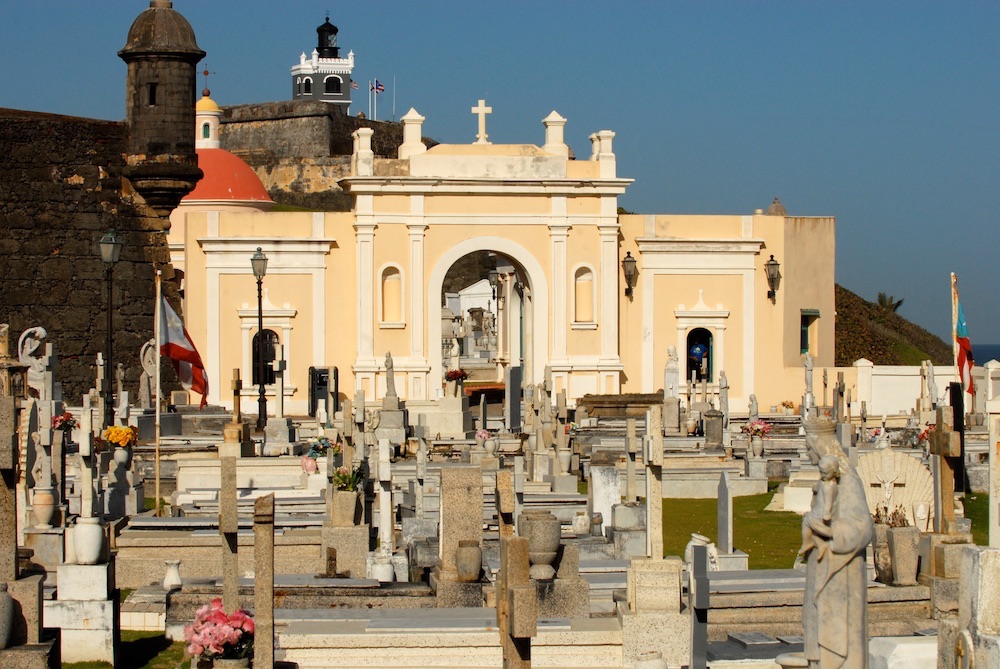
The tomb of Pedro Salinas, an important Spanish poet exiled in Puerto Rico when Dictator Francisco Franco won the Spanish Civil War in the 1930’s, is situated there. Not far is the grave of Jaime Benitez, the renowned Chancellor of the University of Puerto Rico who welcomed persecuted Spanish intellectuals like Salinas and Nobel Prize winner Juan Ramon Jimenez into academic refuge on the island.
Another Benitez family notable is Felix Benitez Rexach and his eccentric French wife, Moineau who were immortalized in statues. Benitez’s masterpiece was the Normandie Hotel, currently abandoned next to the Caribe Hilton Hotel and modeled after a famous transatlantic ship where they fell in love. The couple scandalized the San Juan society in the 40’s when they hosted a party for a Who’s Who crowd and Moineau was said to have received here guests wearing only a red chapeaux and fancy shoes. Most left while only their real friends stayed or so the story goes.
Near one of the walls are the tombs of the patriots, which include the last dwelling of Pedro Albizu Campos, the Harvard trained lawyer who actually led a failed nationalist uprising against U.S. rule in 1950 and spent most of his life in prison.
The Ballaja Quarters
As you head uphill from the cemetery you pass the Plaza of the 5th Centenary, a square built to celebrate the 500 years of the arrival of Europeans to the Americas, and you enter the Ballaja Quarters, the first of three late 19th century important civil works within the boundaries of El Morro’s grounds.
In front of the Quarters is the Hospital de la Beneficiencia, known as the Poorhouse, where the government provided shelter and services for the homeless. Finally, facing the El Morro Fort is the Old Madhouse, the first mental hospital completed in 1873, which now is the home of the Puerto Rico School of Fine Arts.
Cobblestone streets and unique houses
As the tour leaves the Ballaja area into San Sebastian Street, you find yourselves strolling down the Callejon del Hospital (Hospital Alley) that goes from San Sebastian into Sol Street. This is one of the pedestrian pathways designed for crossing between the horizontal streets while walking up or down the steep hill that make up the town’s topography.
The Callejon del Hospital has another strip named Escalinata de las Monjas (The Nuns Stairway) from Sol Street which leads into the Caleta de las Monjas, probably the most enchanting street in the city with huge old trees. The reference to nuns in these back alleys comes from the fact that the city’s main nun convent was located right in this area, now known as the El Convento Hotel, across the historic San Juan Cathedral.
The buildings in the residential streets of San Juan are divided by what is known as party walls with no lawn space between the houses. The most distinctive features are the ample inner courtyards, characteristic of the Spanish era’s old urban construction to provide gardens as well as natural light into the homes. When the tour continues through San Sebastian Street, it enters house number 107, home of Architect Fernando Abruña. During its existence, this house was used for public housing for the poor, a brothel, a bar, and now it is an elegant residence and studio of architect Abruña, who opens it up occasionally as a sort of living museum for the walking tour.
Most people think the bluish cobblestone so emblematic of the streets of Old San Juan is the original pavement, but that’s not the case. The original dirt streets were paved during the 18th century with a layer of silicate river rock from the Loiza River. Then in the 1860’s the river rocks were replaced by smoother blue cobblestones which are concrete bricks mixed with pumice stone. The original cobblestones were imported from England.
First Christian churches of the Western Hemisphere
Halfway up Cristo Street just before the small Cathedral Square, the tour passes the Old Cabildo, an original 18th century Town Hall. Across the street is the San Juan Cathedral, whose original structure was built between 1530 and 1550. The spiral belfry staircase, the high altar’s apse wall crowned by a ceiling with intersecting pointed arcs, represents a rare example of gothic architectural features. In the 1850’s most of the ceiling was rebuilt and replaced with a half round barreled vault, the highest of its kind in the city.
The cathedral is a favorite wedding venue for the prominent families and its romantic colonial atmosphere combined with a royalty-like status have also attracted Puerto Rican international celebrity Marc Anthony and Miss Universe Dayanara Torres to renew wedding vows there in 2002.
On the top of Cristo Street behind the San Jose Square is the San Jose Church, originally known as the Iglesia de San Tomas de Aquino, built from 1523 to 1735 by the Dominican Order as part of their Saint Aquinas monastery. The church is one of the finest and oldest examples of Spanish Goth-influenced religious architecture; there is more presence of this style than in the Cathedral, which is the second oldest church in the Americas.
The convent, like the Ballaja Quarters, has a very large courtyard surrounded by a double half pointed archade. After being the home of austere medieval clergymen and refuge for the early settlers it ended up becoming the headquarters for American soldiers as Fort Brook under the U.S. military during the first part of the 20th century. In the 1960’s it was finally returned to the Institute of Puerto Rican Culture and is now the site of the institution’s National Gallery.
After the tour ends, it feels like you’ve lived in San Juan for the past 500 years. You can find information about the San Juan Oculto walking tour through its blog or Facebook page.

